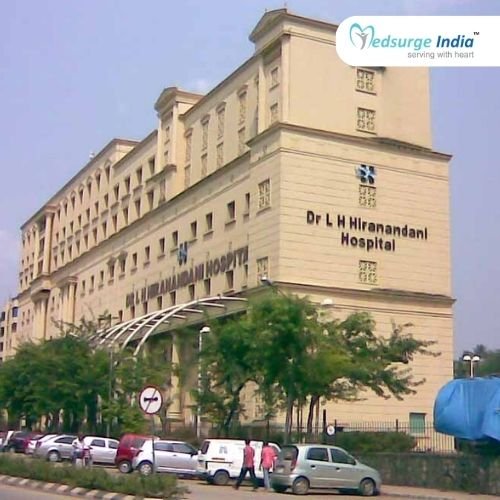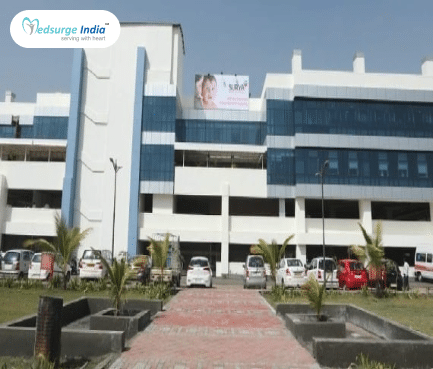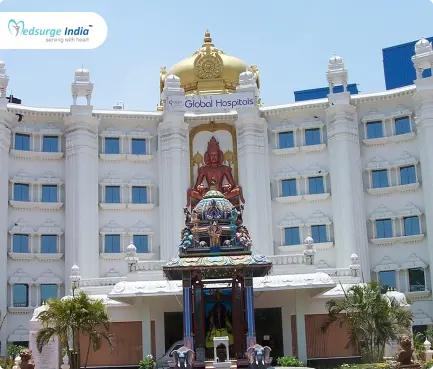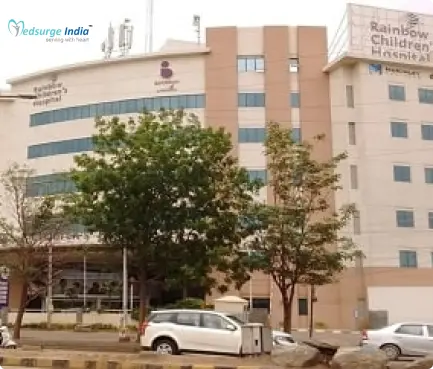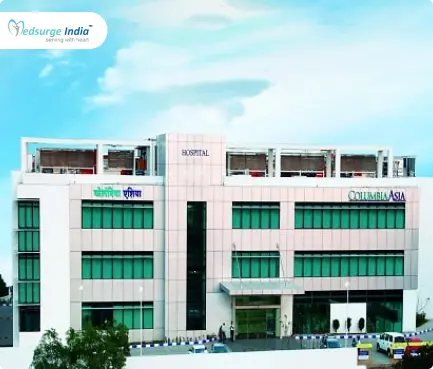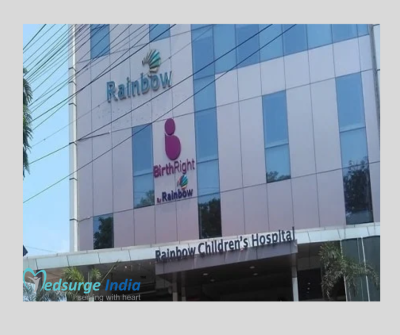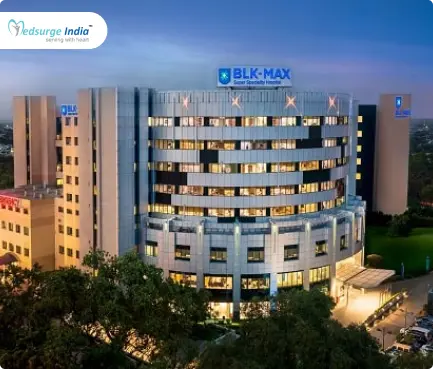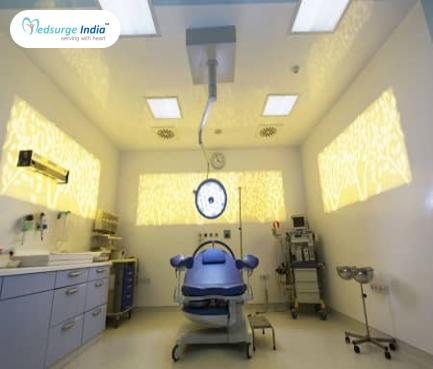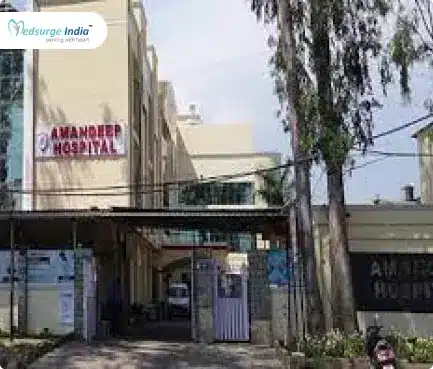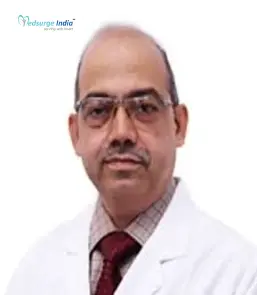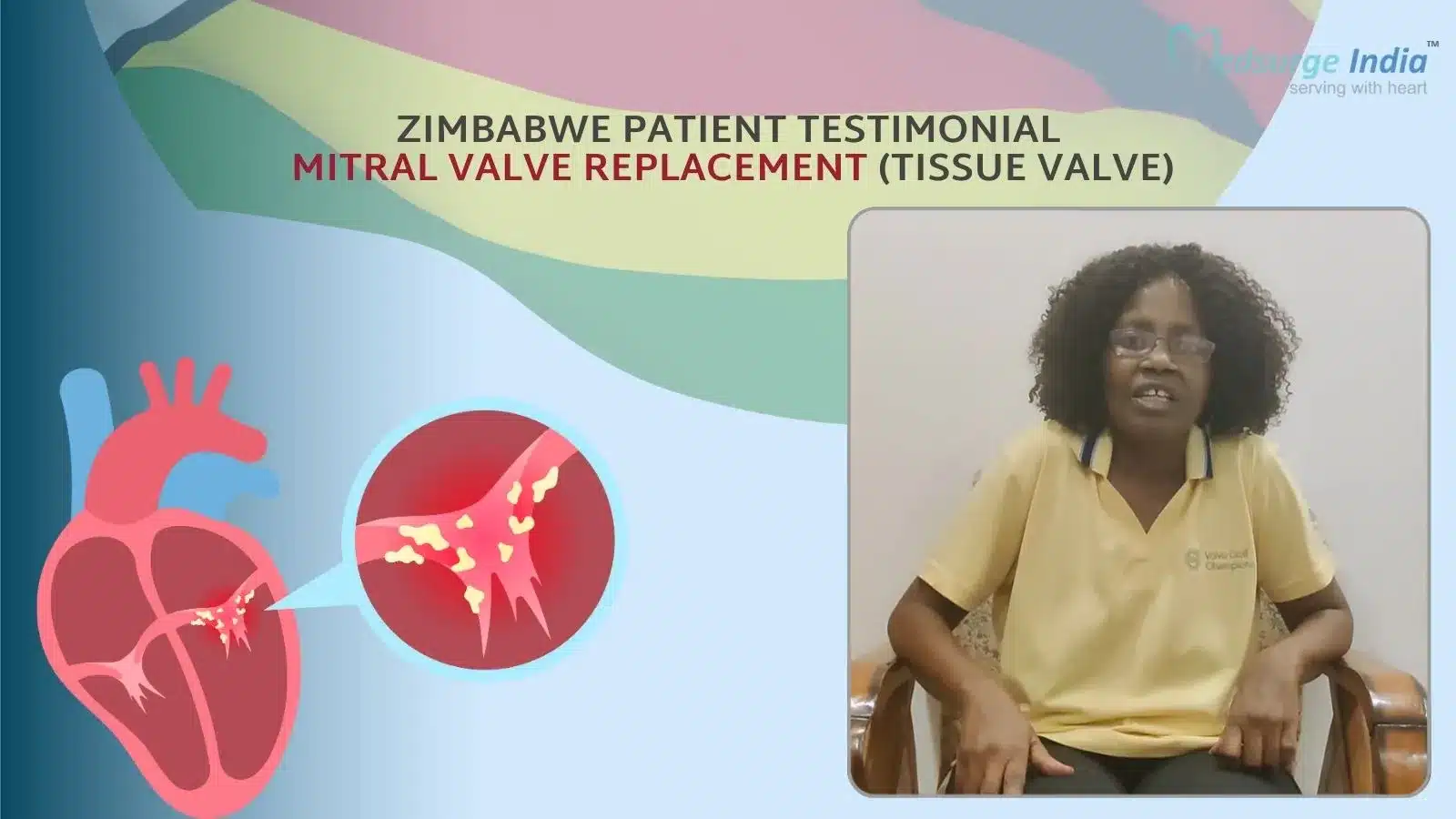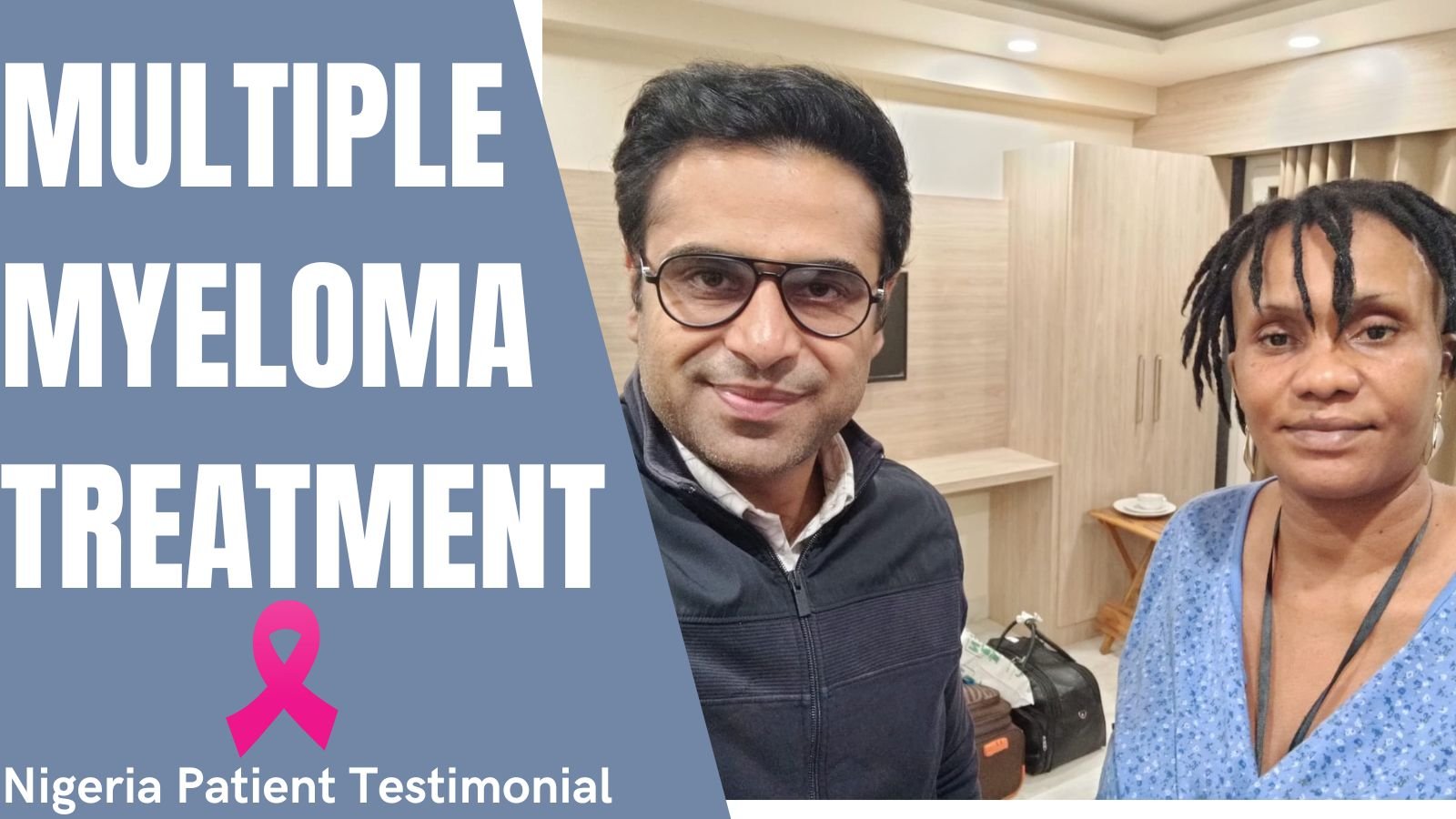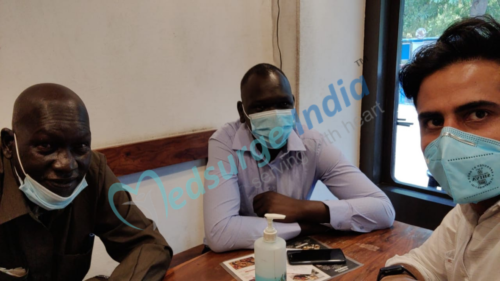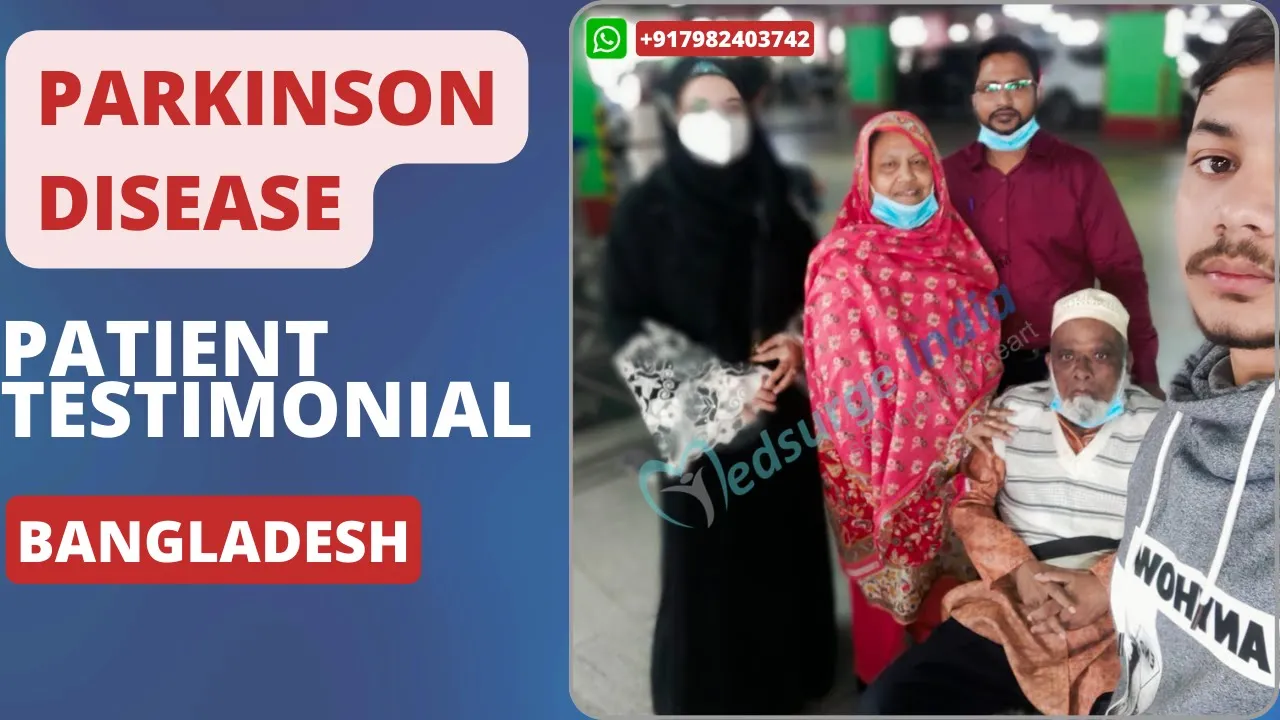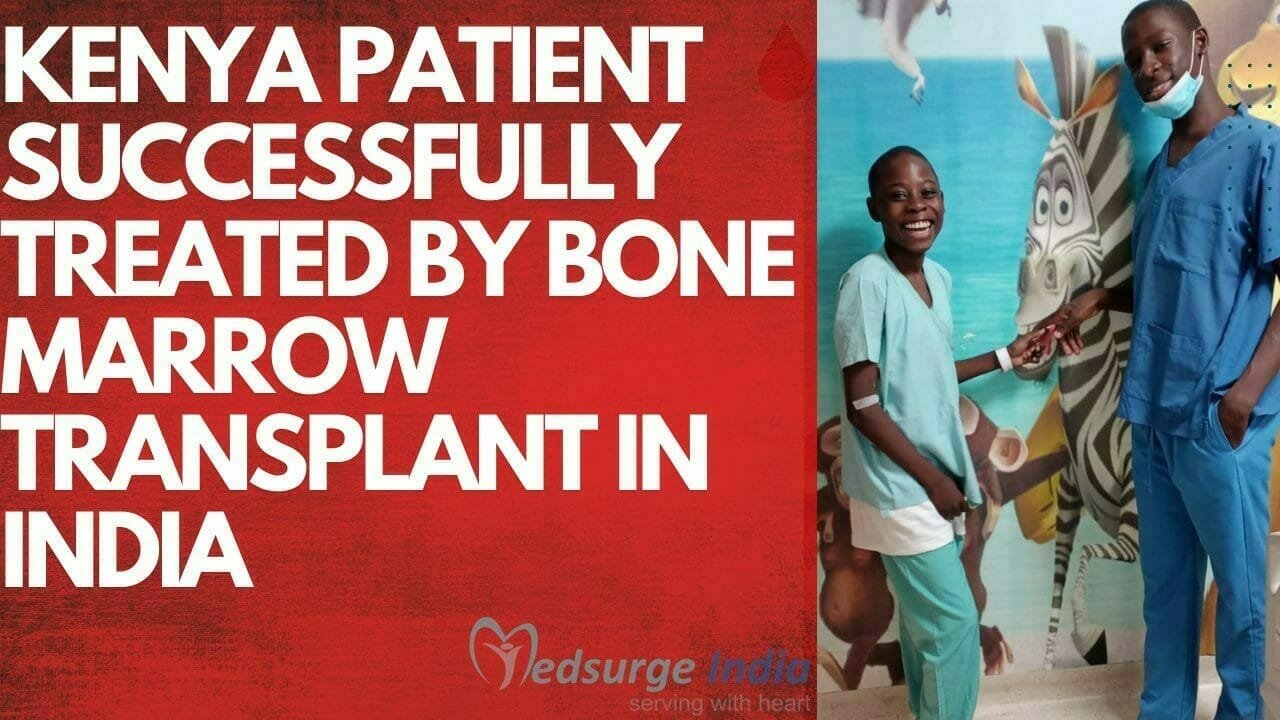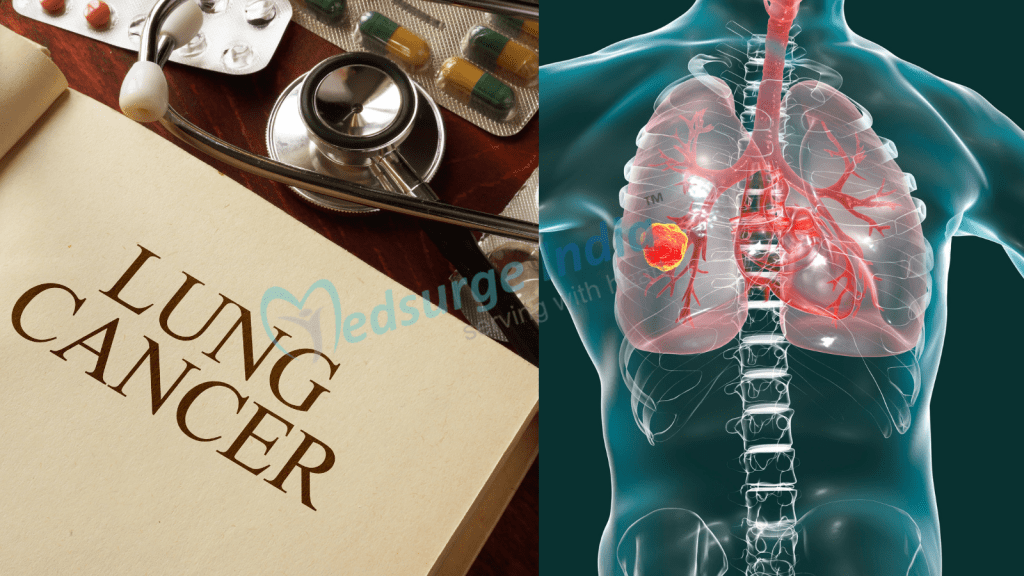
Know Details Lung Cancer Treatment Cost in India
Lung cancer is a type of cancer that starts as a growth of cells in the lungs. The Lung Cancer Treatment cost in India ranges from around USD 3000 to USD 18000, depending on certain conditions such as; the type of cancer i.e. benign or tumor, additional procedures, and other various factors.
Lung Cancer Treatment Cost in India
The average cost of lung cancer treatment in India varies based on the region, the hospital’s reputation, the components of the overall cancer package, the specialist’s experience, the success rate, the type of cancer procedure necessary, and the medications needed. On average, Lung Cancer Treatment cost in India can range from USD 3000 to USD 18000 or even more, depending on the above-mentioned factors. Patients can choose several affordable Lung Cancer Treatment options after consulting with an oncologist specialist. We at Medsurge India provide patients with the most affordable cost for Lung Cancer Treatment varying from USD 3000 to USD 15000. Furthermore, It is advisable to consult with an oncologist specialist for a customized treatment plan before starting your journey.
Components of Lung Cancer Treatment Cost in India
Lung Cancer Treatment cost in India generally includes the following components:
- Consultation fees: The doctor’s fee or the hospital charges for an initial consultation where the patient’s medical history and other evaluation tests are discussed. Know that the consultation fee can vary depending on the experience and reputation of the doctor.
- Medication cost: The cost of medications used in cancer in India can vary depending on the protocol and dosage prescribed.
- Diagnostic tests and ultrasound scans: These include various tests and scans to evaluate the type of cancer a patient, may have. It also includes blood tests, imaging tests, and other diagnostic procedures.
- Surgery: Removal of the tumor or cancerous tissues. The cost will also depend on the surgeon’s fees, hospital stay, anesthesia, and post-operative care.
- Chemotherapy: Use of drugs to stop cancer growth or kill cancer. The cost components will also depend on the chemotherapy drugs, nursing care, administration fees, and other management-like side effects.
- Radiation therapy: The cost components for this therapy will also depend on the radiation oncologist fees, radiation sessions, treatment planning, and follow-up.
- Targeted Therapy: Similarly the cost components of chemo and radiation therapy for targeted therapy will be the same.
- Immunotherapy: This procedure helps the immune system fight cancer. the total cost will depend on immunotherapy drugs, administration fees, and follow-up care.
- Hormone therapy: This procedure uses hormone-blocking drugs to treat certain types of cancer. The total cost will be estimated after going through the hormone therapy drugs and monitoring for side effects.
- Follow-up and Monitoring: Regular check-ups to monitor for recurrence and manage long-term side effects of the treatments.
It’s worth noting that the exact cost of Lung Cancer Treatment in India can vary depending on the type of cancer or the type of procedure the patient may require. Therefore, checking with the hospital or with the coordinator about their specific Lung Cancer Treatment cost and what is included is important.
Cost of Lung Cancer Treatment Procedures in India
| Treatments | Starting Price |
| Surgery: To remove cancer cells/ tumors | USD 3000 |
| Chemo Therapy: Use of drugs to stop or kill cancer cells. | USD 650 |
| Radiation Therapy: Use of high radiation to shrink cancer cells. | USD 1600 |
| Immuno Therapy: Use of treatment to help the immune system to fight cancer cells. | USD 600 |
| Hormone Therapy: Use of hormone drug therapy to treat certain types of cancer. | USD 680 |
| Targeted Therapy: Drugs that are specially made for targeting cancer cells. | USD 870 |
Lung Cancer Treatment Cost in Different Cities in India
| States | Starting Price |
| Delhi | USD 3000 |
| Gurgaon | USD 3000 |
| Noida | USD 3000 |
| Mumbai | USD 3500 |
| Bangalore | USD 3500 |
| Chennai | USD 3100 |
| Hyderabad | USD 3200 |
Note: Keep in mind that the above-mentioned cost provided is solely for the treatment. The overall cost of Lung Cancer Treatment in India will be determined based on several factors.
Details Info on Factors that Can Affect Lung Cancer Treatment Cost in India
Various factors can affect Lung Cancer Treatment Cost in India. Below are the various factors that can affect the cost of Lung Cancer Treatment in India.
- Medication costs: Certain medicines can influence the overall cost of Lung Cancer Treatment in India.
- Patient Condition: The complexity of the patient’s overall health can affect the duration of treatment, impacting the cost.
- Duration of treatment: Longer treatment courses involving multiple visits can lead to higher cumulative costs.
- Geographical location: Cost can vary widely depending on the region in India.
- Hospitalization expenses: The length of hospital stay and the level of nursing care required by the patient can add to the treatment expenses.
- Government policies and subsidies: Government healthcare schemes and subsidies can reduce out-of-pocket expenses for patients, affecting the affordability of Lung Cancer Treatment.
- Medical tourism packages: Curated packages for international patients can include various services at a bundled cost, influencing the overall expense of treatment in India.
- Hospital reputation and infrastructure: Prestigious hospitals with state-of-the-art facilities may charge more for their services.
- The expertise and experience of medical professionals: Oncologist specialists and surgeons with extensive experience and recognition often command higher fees, contributing to the treatment cost.
- The type and frequency of diagnostic procedures: Regular monitoring with advanced imaging and laboratory tests can increase treatment costs due to the high price of these diagnostic methods.
- The choice of treatment modality: Opting for newer or more advanced treatment options or precision medicine can be more expensive than traditional approaches.
For patients, Lung Cancer Treatment in India offers exceptional medical services and facilities to those who seek treatment in India. These facilities rival those of well-known healthcare centers globally. Also, Lung Cancer Treatment cost in India are financially far more budget-friendly as a foreign patient can save up to 40% of the total cost when compared to its native country.
Success Rate of Lung Cancer Treatment in India
The success rate of lung cancer treatment in India is about 80% to 90%. Additionally, the success rate varies significantly based on factors such as the stage of cancer diagnosed, the type of lung cancer, and the treatment approaches.
How Can You Save Cost During Lung Cancer Treatment?
Here are some ways to save cost during Lung Cancer Treatment in India:
- Compare prices and services offered by different cancer hospitals.
- Look for hospitals that offer discounts or package deals.
- Choose a Hospital that is located closer to your home to reduce travel expenses
- Consider opting for companies that offers treatments globally and are in collaboration with the top hospitals and doctors.
What are the Ways to Ease your Financial/Cost Burden During Lung Cancer Treatment in India
Here are some ways to ease your financial burden during Lung Cancer Treatment in India:
- Check if your employer offers any financial assistance for Lung Cancer Treatment packages in India.
- Look for government schemes that provide financial assistance for Lung Cancer Treatments in India.
- Consider crowdfunding or seeking help from non-profit organizations that provide financial assistance for Lung Cancer Treatment in India.
Why Choose Medsurge India for Lung Cancer Treatment?
Medsurge India is a distinguished support system for patients in search of doctors, hospitals, and specialized treatments. We are dedicated to identifying the most appropriate medical solutions tailored to your needs. Our team will furnish you with a roster of accredited, esteemed, and reliable doctors and hospitals to address your medical concerns. Furthermore, we present a treatment plan that aligns with your financial constraints. In addition, we extend our support to patients in securing travel permits, medical visas, and various other necessities.
- Provides 100% transparency.
- Reasonable prices.
- 24×7 availability.
- Provide medical E-visa.
- Free online consultation with renowned specialists in India.
- Help you in choosing the best hospitals for Lung Cancer Treatment in India.
- In accordance with the utmost international standard
- Qualified oncologist specialist with a high success rate.
- Provide support throughout the treatment.
Get Free Cost Estimation
Top Hospitals for How Much Lung Cancer Treatment In India
Top Doctors for Oncology and Oncosurgery
Dr. Senthil Kumar
Consultant , MBBS, MS, MCh, Fellowship
Experience: 14 years of experience
Chennai, India
Dr. Somashekhar S. P.
Head of Department
Experience: 12 years of experience
Manipal Hospital (Old Airport Road) Bangalore
Bangalore, India
Dr. Parmod Kumar
Experience: 15+ years of experience
Max Super Speciality Hospital Dehradun
Dehradun, India
Dr. Sunandan Sharma
Associate Director
Experience: 22 years of experience
Max Superspecialty Hospital, Mohali
Mohali, India
Dr. Vijay Anand Reddy Palkonda
Senior Consultant
Experience: 34 years of experience
Hyderabad, India
Dr. Praveen Kammar
Consultant
Experience: 13 years of experience
Nanavati Super Specialty Hospital Mumbai
Chennai, India
Dr. Praveen Kumar Garg
Senior Consultant
Experience: 26 years of experience
Indraprastha Apollo Hospital New Delhi
New Delhi, India
Dr. Gunjan Baijal
Experience: 20+ years of experience
Manipal Hospital, Panaji, North Goa
North Goa, India
Dr. Dinesh Chandra Katiyar
Senior Consultant
Experience: 30 years of experience
Venkateshwar Hospital, New Delhi
New Delhi, India
Dr. Neha Rastogi
Senior Consultant MBBS, Diploma, DNB, Fellowship
Experience: 15 years of experience
Medanta - The Medicity, Gurgaon
Gurgaon, India

